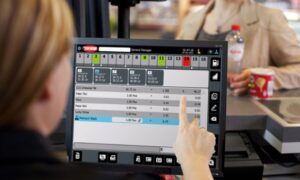Introduction
Restaurants come in a variety of shapes and sizes, each catering to different tastes and preferences. From fast food joints to fine dining establishments, they all have their own unique charm and appeal. In this section, we will delve into the advantages and disadvantages of different types of restaurants.
1. Fast food restaurants:
Advantages:
1. Quick service: One of the biggest advantages of fast food restaurants is their speed. They are designed to serve food quickly, making them a convenient option for people on-the-go.
2. Affordable prices: Fast food restaurants tend to offer meals at lower prices compared to other types of restaurants, making them budget-friendly options for those looking for a quick bite.
3. Consistency: Fast food chains have standardized menus and recipes across all their locations, ensuring that customers get the same taste and quality every time they visit.
Disadvantages:
1. Unhealthy options: Most fast food meals are high in calories, fat, and sodium, leading to health problems if consumed regularly.
2. Limited menu choices: As these restaurants mainly focus on popular items with mass appeal, there may be limited options for those with dietary restrictions or specific cravings.
3. Lack of atmosphere: Due to their quick-service nature, fast food restaurants often lack ambiance or personalized service.
2. Casual dining restaurants:
Advantages:
1. Wide variety on the menu: Casual dining restaurants offer a more diverse menu compared to fast-food joints. This allows customers with different preferences or dietary requirements to find suitable options.
2. Relaxed atmosphere: These restaurants usually have a cozy ambiance that encourages diners to sit back and enjoy their meal at a leisurely pace.
3. Affordable prices: While not as cheap as fast food chains, casual dining establishments still offer reasonably priced meals that won’t break the bank.
Disadvantages:
1. Longer wait times: As these restaurants prepare dishes upon order rather than having pre-made items ready-to-go like fast-food places do, diners may have to wait longer for their food.
2. Inconsistent quality: As these restaurants use fresh ingredients and have more complex menus, it can be challenging to maintain consistent taste and quality across all dishes.
3. Service issues: With a larger menu and varied customer preferences, casual dining restaurants may struggle with providing prompt service or getting orders right.
3. Fine Dining Restaurants:
Advantages:
1. High-quality food and service: Fine dining restaurants pride themselves on offering top-notch food and impeccable service, making them an ideal choice for special occasions or dates.
2. Elegant ambiance: These restaurants often have elegant decor, creating a sophisticated atmosphere that adds to the overall dining experience.
3. Unique and creative dishes: Fine dining establishments are known for their innovative and visually appealing dishes that use high-quality ingredients.
Disadvantages:
1. Expensive prices: The cost of fine dining meals is undoubtedly higher compared to other types of restaurants due to the premium ingredients used and exclusive ambiance offered.
2. Limited accessibility: These restaurants are not as widespread as fast-food or casual dining options, making it challenging for people in remote areas to access them.
3. Formal atmosphere: While some may enjoy the elegant ambiance, others may find it intimidating or uncomfortable.
4. Buffet Restaurants:
Advantages:
1. Variety of options: Buffet restaurants offer a wide selection of dishes, allowing diners to try different items and cater to a variety of preferences.
2. All-you-can-eat: Many buffet restaurants have a fixed price for unlimited servings, making it a cost-effective option for those with a big appetite.
3. Speedy service: Since customers serve themselves at the buffet, there is no wait time for food to be prepared and served.
Disadvantages:
1. Food waste: With unlimited servings and an overwhelming number of options, customers may tend to overeat or take more than they can finish, leading to food waste.
2. Quality concerns: As many dishes are made in bulk and sit out on the buffet line for extended periods, there may be concerns about the freshness and quality of the food.
3. Limited customization: Buffet restaurants do not offer much flexibility for customization or dietary restrictions as most dishes are pre-made and cannot be altered upon request.
Conclusion
Restaurant preferences can vary greatly from person to person, and each type of restaurant has its own unique advantages and disadvantages. Ultimately, the best type of restaurant for you will depend on your personal tastes, budget, and dining needs. It is essential to consider these factors when choosing a restaurant to ensure an enjoyable dining experience.



































